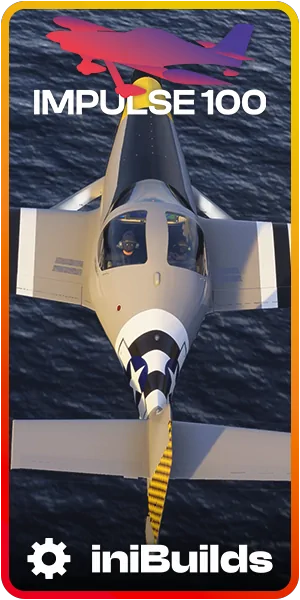How simmers are flying in 2024, according to the FlightSim Community Survey

Every year, tens of thousands of virtual pilots take part in what’s become something of a tradition: the FlightSim Community Survey, organized by Navigraph in collaboration with dozens of partners across the flight sim ecosystem. This year, over 23,000 simmers answered 50 questions that peeled back the curtain on who they are, what they fly, and why they keep coming back to this niche—yet remarkably active—corner of gaming.
But what makes this year’s survey especially telling is how it reveals a community in the middle of a balancing act—between visual wow-factor and performance, immersion and realism, loyalty and experimentation.
MSFS 2024 adoption
According to the survey, 58.5% of respondents have already tried Microsoft Flight Simulator 2024. For a platform that’s barely out of its inaugural runway rotation, that’s a good start, but there’s nuance here. While many are dipping their toes into MSFS 2024, only 24.9% currently list it as their primary simulator, compared to 52% still holding on to MSFS 2020.

So, what do users think?
Well, the verdict is mixed. In terms of expectations, the new sim scores high on visuals. Nearly half of respondents say the graphics exceeded or far exceeded what they were hoping for. But performance and stability? That’s another story. FPS improvements, long hyped by the development team and eagerly awaited by users, didn’t wow everyone. In fact, many said performance was about what they expected—or slightly below.
The real pain point? ATC. Over half of the community rated MSFS 2024’s built-in Air Traffic Control as below expectations. Not exactly a glowing report card for a core feature in a simulator that aspires to bring the virtual aviation experience closer to the real world.
When asked how likely they were to recommend MSFS 2024, the most common response was a lukewarm 5–6 on a 10-point scale. While 24% were enthusiastic enough to score it 7 or higher, a notable 16% came in below 4, signaling dissatisfaction.
Compatibility and content matters
One of the clearest takeaways from the survey is that users care—deeply—about backward compatibility and available content. Missions, weather radar functionality, and stability were all flagged as areas where MSFS 2024 didn’t quite deliver. And while the visual upgrade is appreciated, it’s clear that many users are holding off a full transition until their favorite aircraft, tools, and workflows are fully supported in the new sim.
In the meantime, MSFS 2020 continues to do the heavy lifting for a majority of users.
Addon preferences: airliners rule
On the content front, the Fenix A320 family leads the pack as the most-used MSFS addon aircraft (55.7%), followed by PMDG’s 737 series (40.2%). IniBuilds’ A350, despite being a recent entry, is already used by 23.2% of respondents. And FlyByWire’s freeware A380X? It has made a strong showing at 13.7%, a remarkable figure for an aircraft still in alpha.
It’s clear that fidelity and complexity remain major draws. Users want advanced systems, realistic behavior, and detailed avionics. Depth of systems, flight model accuracy, and cockpit features ranked at the top of the list when simmers were asked what they valued most in addon aircraft.

Realism still rules
Interestingly, when asked why they choose to fly where they do, realism—not just visuals—was the top motivator. Scenery detail was important, but real-world routing, flight durations, ATC coverage, and even challenging approaches all played significant roles. In short, the MSFS community isn’t just looking for pretty screenshots. They’re trying to simulate something that feels authentic.
And while we’re at it: 44.4% of users say they inject real-world AI traffic with FSLTL, underscoring how much immersion depends on what’s going on around the aircraft, not just in the cockpit.
The store shuffle
One of the more unexpected insights in this year’s report? A quiet reshuffling in the online store hierarchy. The MSFS in-game Marketplace, once the undisputed leader, saw a drop in usage—from 54.4% last year to just 35.9%. Meanwhile, iniBuilds’ iniStore and Contrail are on the rise, with 38.3% and 22.6% of users shopping there, respectively.
The likely cause? At the time of the survey, the in-game Marketplace didn’t yet support MSFS 2024. But perhaps there’s more to it—users may be diversifying their sources based on pricing, availability, or just trust.
Looking ahead
So what are users most looking forward to? The Bluebird 757/767 tops the list of anticipated releases (24%), followed closely by the PMDG 747 (20%). But interestingly, “stability updates for MSFS 2024” was the third most anticipated thing overall.
A community in motion
The FlightSim Community Survey 2024 doesn’t paint a picture of dramatic upheaval or flashy trends. Instead, it captures a hobby that evolves in deliberate, measured steps. Familiar tools remain in use, but new ones are gaining ground. Users are selective with their time and money. And while modern simulators like MSFS 2024 draw a lot of attention, many still prefer what’s familiar—at least for now.
What’s clear is that flight simulation is no longer a niche driven by a single platform or purpose. It’s fragmented, multi-layered, and increasingly shaped by user expectations that go beyond realism for realism’s sake. Whether it’s a preference for structured flying, a shift in where people shop, or how they engage with AI tools, the habits of this community are steadily shifting—just not always where or how you’d expect.
The data points may vary, but the underlying story is familiar: flight simulation is a long-term hobby shaped by personal priorities. Some are chasing realism, others immersion, and many both. The survey doesn’t define where things are headed—it shows how many directions people are already flying in.
Full results now available
Navigraph has published the complete results of the 2024 FlightSim Community Survey. If you’d like to explore the data yourself or dig deeper into specific topics, here are the official resources:
Read Navigraph’s blog post with selected survey highlights
Download the full survey dataset (no personal data included)
Download the complete survey report as a PDF













